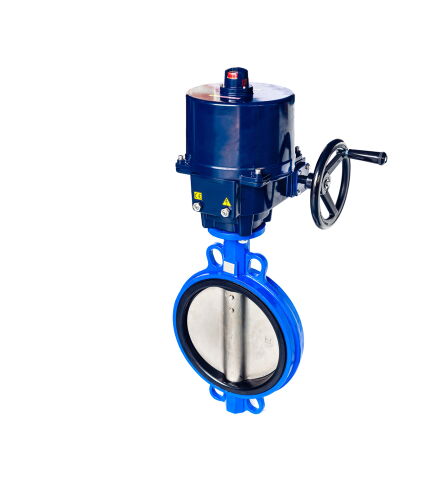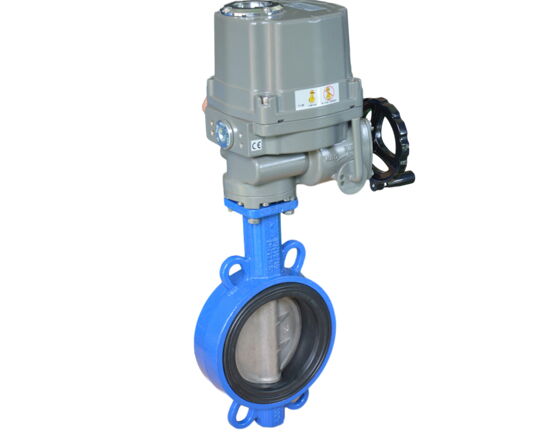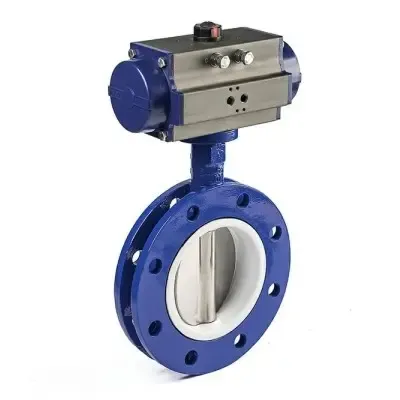In today’s industrial landscape, butterfly valves play a vital role in regulating flow in pipelines across various industries—from water treatment and chemical processing to power generation and HVAC systems. However, the efficiency and performance of a butterfly valve depend not only on the valve body itself but also on the actuator that operates it.
Choosing the right actuator for a butterfly control valve is critical to ensuring optimal system performance, safety, and long-term reliability. Actuators are the components responsible for moving the valve disc to open, close, or throttle flow through the pipeline. The method by which this movement is achieved varies depending on the type of actuator—manual, electric, pneumatic, or hydraulic.
This comprehensive guide will walk you through the main types of butterfly valve actuators, the factors that influence actuator selection, and the ideal applications for each type. Whether you're an engineer planning a new system or a maintenance professional replacing existing equipment, this guide will help you make a more informed decision.

A butterfly valve actuator serves as the driving force behind the valve’s movement. It connects to the shaft of the butterfly valve and manipulates the position of the disc, allowing fluid to pass through, be throttled, or be completely shut off. The efficiency of this operation depends heavily on the selection of the appropriate actuator type.
Actuators can be as simple as a manual hand lever or as complex as a remotely controlled, automated electric or pneumatic unit. In automated systems, actuators play an especially critical role by integrating with control systems to manage fluid flow without human intervention.
When selecting a butterfly valve actuator, multiple factors must be taken into account to match the actuator type with the application's requirements. These include:
If the valve is only operated occasionally—such as during maintenance or emergency shutdowns—a manual actuator may be sufficient. However, for processes that require frequent operation or automation, electric, pneumatic, or hydraulic actuators are more suitable.
As valve size increases, so does the torque required to operate it. Manual actuators may become impractical for large-diameter valves, often necessitating gearboxes to reduce the effort required. Pneumatic or hydraulic actuators are typically preferred for high-torque applications due to their high power-to-size ratio.
For systems operating under high pressure or containing viscous or abrasive media, hydraulic actuators offer better control and durability. Pneumatic actuators also perform well in medium to high-pressure applications but may require clean, dry air to operate reliably.
In applications where fast opening or closing is required—such as in emergency shut-off or process control—pneumatic actuators are ideal due to their rapid response time. Electric actuators tend to operate slower but offer better positioning accuracy.
The availability of an external power source often determines whether electric or pneumatic actuators can be used. Manual actuators do not require any external power and are ideal for remote locations without access to electricity or compressed air.
Certain environments, such as those with explosive gases or high moisture levels, limit the use of electric actuators due to safety or reliability concerns. Pneumatic and hydraulic actuators are often more suitable for these harsh conditions.
Generally, manual actuators are the most cost-effective, followed by electric, pneumatic, and hydraulic actuators. While automated actuators involve higher initial costs, they can reduce labor and improve system performance over time.
Description:
Manual butterfly valve actuators operate using a handwheel, lever, or gearbox. The user physically turns the actuator to open or close the valve. For valves larger than 12 inches, a gear-operated actuator is often included to reduce the force needed for operation.
Key Features:
No power source required
Easy to install and maintain
Suitable for infrequent operation
Comes with lever or gear operator options
Applications:
Water supply systems
HVAC systems
Agricultural irrigation
Emergency shut-off where manual override is preferred
Advantages:
Low cost and simple construction
Ideal for isolated or remote installations
Fail-safe by default—remains in current position if unattended
Disadvantages:
Not suitable for automation
Requires human intervention
Not ideal for large or high-pressure systems
Description:
Electric actuators use motors to drive the valve open or closed. They are typically powered by AC or DC current and can be integrated into control systems for precise flow regulation.

Key Features:
Suitable for automated systems
Excellent for modulating applications
Includes torque limiters and position indicators
Offers remote control and diagnostics
Applications:
Water treatment facilities
Food and beverage processing
Pharmaceutical production
Building management systems
Advantages:
Accurate and programmable
Low noise operation
Suitable for continuous operation and feedback control
Disadvantages:
Slower response time compared to pneumatic actuators
Not ideal in wet or explosive environments
Higher initial investment
Description:
Pneumatic actuators operate using compressed air to move a piston or diaphragm that rotates the valve. They are commonly used in applications that require fast, repeatable motion.

Key Features:
Fast and responsive
Available in double-acting or spring-return configurations
Compatible with positioners and limit switches
Lower installation cost compared to hydraulic systems
Applications:
Chemical processing
Oil and gas pipelines
Power plants
Fire protection systems
Advantages:
Rapid actuation
Lightweight and compact design
Suitable for hazardous environments
Easy to integrate with control systems
Disadvantages:
Requires clean, dry air supply
Can be noisy without silencers
Air leaks may reduce efficiency over time
Description:
Hydraulic actuators use pressurized hydraulic fluid to move a piston, generating the torque needed to operate large or high-pressure valves. They provide strong, consistent force and are ideal for heavy-duty operations.
Key Features:
High torque output
Robust construction
Reliable under high pressure
Available in both linear and rotary designs
Applications:
Marine and offshore platforms
Mining operations
Heavy-duty water control systems
Steel and paper manufacturing
Advantages:
Excellent for large-diameter valves
Can handle extreme pressure and temperature conditions
Smooth, powerful operation
Disadvantages:
More expensive and complex to install
Requires hydraulic fluid and maintenance
Prone to leaks if not maintained properly
|
Actuator Type |
Power Source |
Best For |
Response Time |
Automation |
Cost |
Suitability for Harsh Environments |
|
Manual |
None |
Small, rarely operated valves |
Slow |
No |
Low |
Good (basic use only) |
|
Electric |
Electricity |
Precise control, indoor use |
Moderate |
Yes |
Medium |
Poor in wet/explosive settings |
|
Pneumatic |
Compressed Air |
Fast operation, automation |
Fast |
Yes |
Medium-High |
Excellent |
|
Hydraulic |
Hydraulic Fluid |
High torque, large valves |
Fast |
Yes |
High |
Excellent
|
The selection of a butterfly valve actuator should be driven by the unique requirements of your application—including valve size, system pressure, frequency of operation, environmental conditions, and budget. While manual actuators may be suitable for simple and infrequently used systems, electric, pneumatic, and hydraulic actuators offer greater control and automation capabilities for more demanding applications.
Pneumatic actuators remain a popular choice for their balance of cost, speed, and reliability. Electric actuators are best suited for precise control where power is readily available. For the most heavy-duty applications, hydraulic actuators deliver unmatched force and resilience.
By carefully evaluating these factors, engineers and facility managers can ensure the optimal performance, safety, and longevity of their butterfly valve systems.
